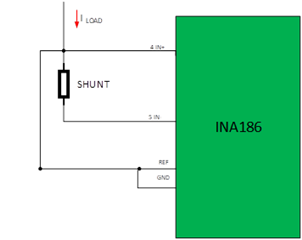Other Parts Discussed in Thread: INA186
hello,
I have one question regarding the INA186A1QDCKRQ1 usage like the picture. We set the GND at the positive of shunt. That means that the potential of the shunt negative will be lower than GND. And the Common-mode voltage will also become negative. Is there any risk?
(P.S. the load current is 20A max and shunt resistance is 0.002ohm).
Thanks for your support!


